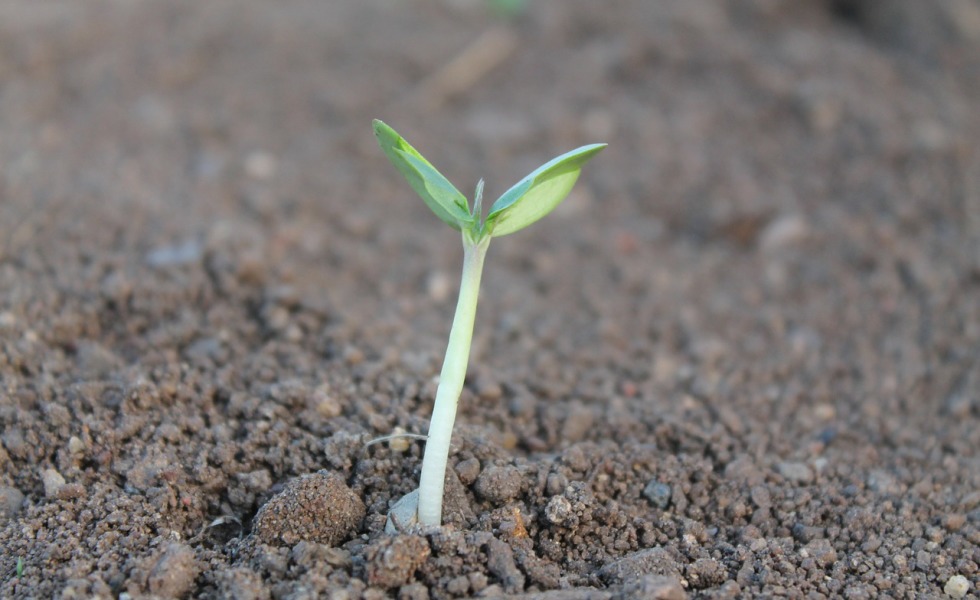The Long, Sustainable View
Posted on May 3, 2018

Who knew that the best view of 21st century agriculture would be from Darrin Qualman’s farm office near Dundurn, Saskatchewan? And yet, there it is, charted by Qualman, a data bloodhound who thinks graphically but writes plainly.
The long-time researcher for Canada’s National Farmers Union appeared on my radar in Feb. 2017 with a blog post titled “Agribusiness takes all: 90 years of Canadian net farm income” on his website, www.darrinqualman.com.
In it, Qualman draws a bright blue/green/red chart that tracks the key elements of Canada’s farm economy from 1926 to 2016; blue is farmers’ expenses, green is net farm income, and red is negative farm income.
The unmistakable feature of the graph is how its blue area—the color depicting “the amounts [farmers] pay to input manufacturers”—has grown from a small area that once steadily corresponded to net income into a yawning mouth that now devours nearly every cent of Canadian farm income.
In fact, “… in the 32-year period from 1985 to 2016, inclusive, agribusiness corporations captured 98 percent of farmers’ revenues—$1.32 trillion out of $1.35 trillion… [to make] themselves the primary beneficiaries of the vast food wealth produced by Canadian farms. They have left taxpayers to backfill farm incomes; approximately $100 billion has been transferred [through government payments] to farmers since 1985.”
While that could be used as evidence to launch an indictment of Big Agbiz, Qualman uses it as a crowbar to pry farmers to consider alternatives to today’s high-input, high-output, no-profit farm and ranch models. In subsequent blog posts, this “avid observer of the big picture” notes that the last century of agriculture—the century that brought high costs and low-to-no profits—is an outlier to the 100 centuries of agriculture that preceded it.
“For 99 percent of the time that agriculture has existed there were few farm inputs, no farm-input industries, and little talk of ‘high input costs,’” notes Qualman in a January 2018 post.
The change, “admittedly,” has made today’s agriculture “high-output. But this last fact must be understood in context: the incredible food-output tonnage of modern agriculture is largely a reflection of the megatonnes of fertilizer, fuels, and chemicals we push into the system. Nitrogen fertilizer illustrates this process. To produce, transport, and apply one tonne of synthetic nitrogen fertilizer requires an amount of energy equal to almost two tonnes of gasoline.”
This has made “modern agriculture… increasingly… a system for turning fossil fuel Calories into food Calories.”
And not efficiently, either. Before petroleum, every “unit” of energy put into food production yielded five to 10 units of energy in terms of food, Qualman relates, quoting other research. Today, however, “(O)ur modern food system returns one unit of energy for every 13.3 invested.” That “energy” return on investment works out to be an astonishingly tiny 0.081.
Given that diminished ratio, little in today’s agriculture is either environmentally or economically sustainable. But, he adds quickly, relax, “We’re not going back to horses.” Instead, “It’s time to question the input-maximizing production systems agribusiness corporations have created, and to explore new methods of low-input, low-energy, low-emission production.”
A low-input, low-energy system, Qualman explains in an April 3 telephone interview, does not mean a stampede to organic farming. “But it does mean, for example, that big, non-organic farms will likely need to learn the low-input fertilizer methods that organic farms have already figured out and use.”
This “cross pollination” between high-input/low-input farming, he offers, will be necessary if everyone in today’s agriculture “grasps the nettle” to harness the change that is coming, ready-or-not, before it harnesses us.
Equally important is that “We can do this,” he adds wryly, “because we’ve done it before.”
We have. In fact, we’ve changed from horses to tractors, from open-pollinated seeds to GMOs, from grandpa’s memory to GPS.
More recent changes have featured the cross pollination that Qualman suggests; yesterday’s windmills are today’s wind turbines and every sunbaked acre can now “grow” electricity from solar cells.
Indeed, change is what farmers and ranchers do. We also know that it’s better to drive change before change drives us.
© 2018 ag comm
Share This